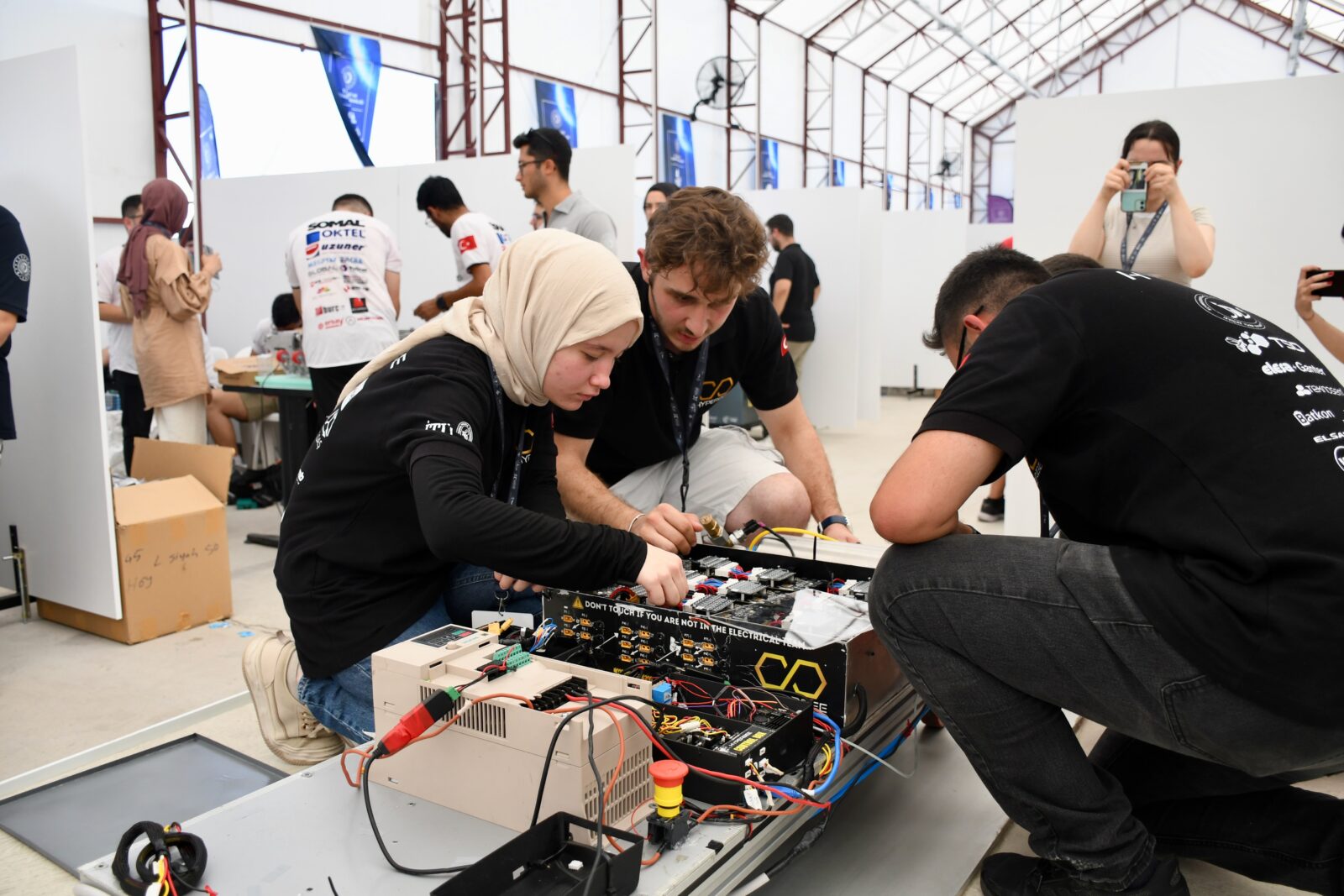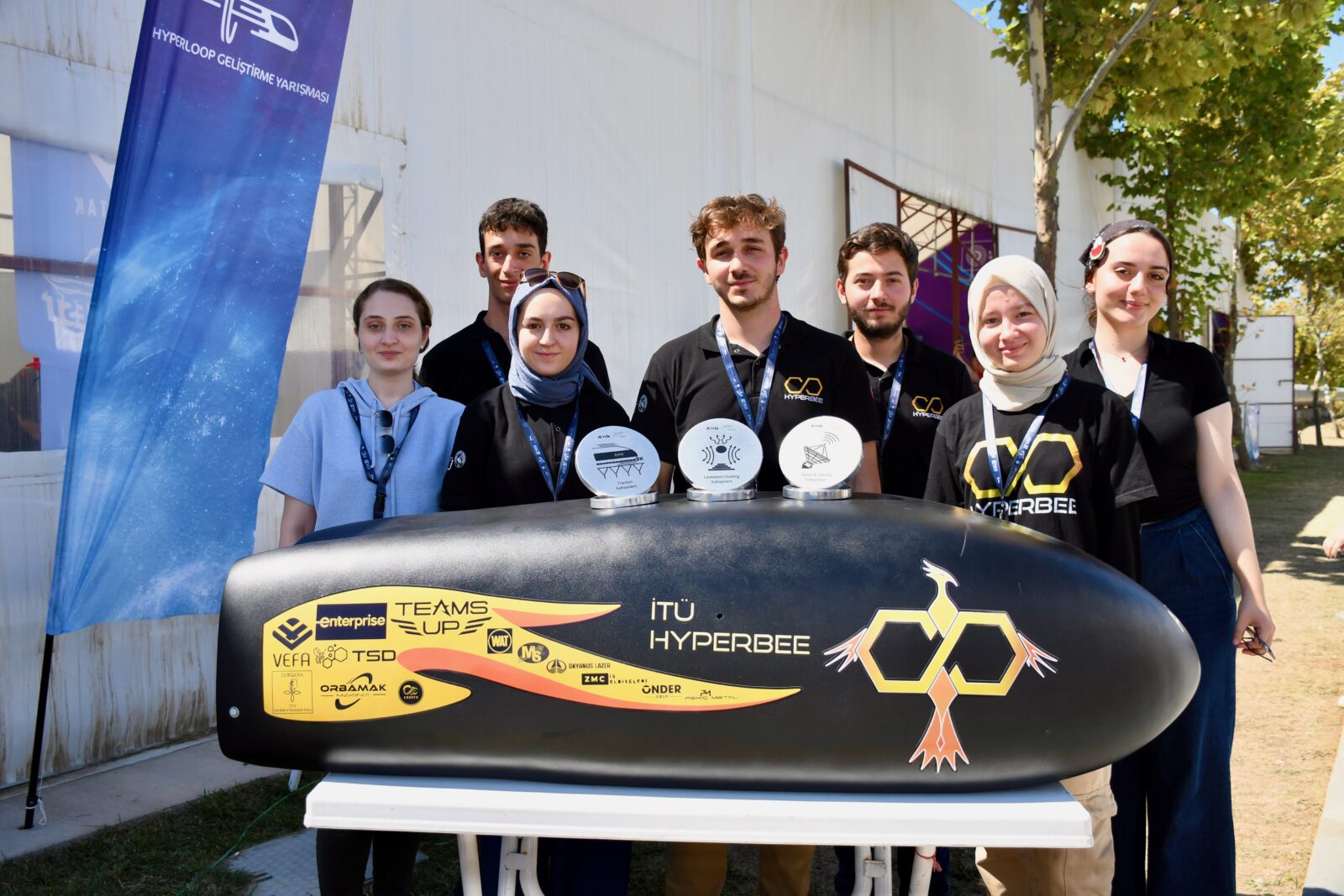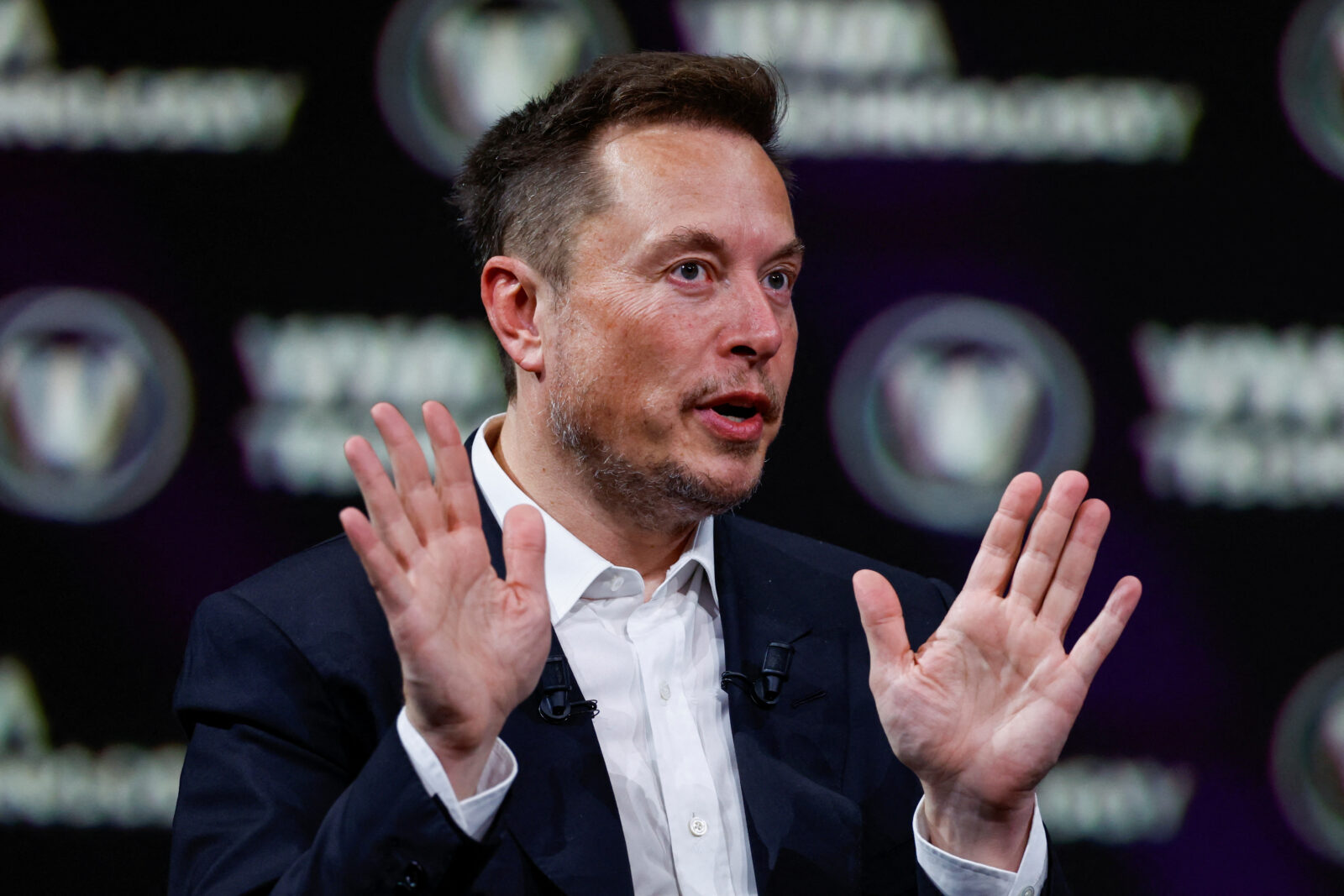Istanbul Technical University (ITU) Hyperbee Team has made headlines by winning three prestigious awards at the EHW Hyperloop Competition in Switzerland.
This remarkable achievement underscores Türkiye’s growing influence in the realm of high-speed rail transport technology.
Major awards and key accomplishments
ITU Hyperbee Team, consisting of talented engineering students, competed in Switzerland from July 15-21, showcasing their advanced hyperloop capsule. Their innovative work earned them accolades in the categories of “Propulsion,” “Levitation,” and “Sensor and Control,” following 10 months of rigorous research and development.
Their ambition is to lead the high-speed rail sector by refining and commercializing their hyperloop train prototype. The team’s achievements also include securing second place at the Scientific and Technological Research Council of Türkiye’s (TUBITAK) Hyperloop Development Competition held in Gebze from Aug. 13 to 17.

Vision and future goals
Hamza Bahadır Celik, team captain, expressed pride in winning Türkiye’s first international hyperloop award.
He emphasized the importance of incorporating global engineering insights into their work and aims to excel in future competitions.
“Hyperloop technology is still in its infancy, and no country has implemented it on a large scale yet. With national support, we are poised to compete on the global stage and develop cutting-edge technologies,” Celik stated.

Pioneering hyperloop technology in Türkiye
Tuba Akbulut, deputy team captain, highlighted their goal to become frontrunners in hyperloop technology within Türkiye. She shared their plans to develop and prototype hyperloop systems and components, positioning Türkiye as a key player in the industry.
“Although hyperloop technology has been around for only about a decade, our rapid progress compared to Europe is significant. Our achievements demonstrate that Türkiye has the potential to lead in this sector,” Akbulut remarked.
With hyperloop technology gaining attention through events like Teknofest, the ITU Hyperbee Team’s success signals a promising future for Türkiye in this groundbreaking field.

What is hyperloop? A revolutionary transportation system
Hyperloop is a groundbreaking transportation system pioneered by Elon Musk. This advanced vehicle utilizes tapray technology, a next-generation rail-less system. Hyperloop is designed as a top-level sur-rail system, promising revolutionary improvements in speed and efficiency.
The hyperloop concept took a significant step forward with the construction of a 4.8-kilometer test track in the Great Basin Desert, Las Vegas, beginning in January 2016. This track, equipped with experimental components and capsules, was crucial for testing and validating the concept. The completion of the first full-scale vehicle and test track was anticipated by the end of 2016. The hyperloop system is designed to move pressure capsules over a cushion of air created by reduced-pressure tubes, driven by air compressors and asymmetric motors.
Proposed routes and cost analysis
In August 2013, initial design documents revealed a proposed hyperloop route stretching from Los Angeles to the San Francisco Bay Area, largely parallel to Interstate 5. Preliminary analyses indicated that this journey could be completed in approximately 35 minutes, with average speeds of 962 kilometers per hour over the 570-kilometer distance.
The system could potentially reach speeds of up to 1,220 km/h. Cost estimates for the passenger-only version of the hyperloop were projected at $6 billion, with a combined passenger and cargo system estimated to cost $7.5 billion.
The hyperloop project faced challenges related to its economic and technological feasibility. In 2013, engineers noted that the safety scale for an untested project was relatively low, leading to ongoing discussions and scrutiny regarding its practicality and viability.
The name “hyperloop” is derived from the combination of “hyper” (meaning “super” or “extreme”) and “loop” (meaning “circuit” or “coil”).
Elon Musk introduced the hyperloop as the “fifth mode of transportation” after land, sea, air, and rail systems. Announced in July 2012 during a PandoDaily event in Santa Monica, the Hyperloop aims to offer a weather-independent, accident-free, and energy-efficient transportation solution with speeds up to twice that of conventional jets.
Musk envisioned the hyperloop as a vehicle that could travel at speeds between an electromagnetic rail gun and the Concorde. This rail-less system can be constructed both underground and above ground.

From late 2012 to August 2013, engineers from Tesla and SpaceX worked on the theoretical foundations of the hyperloop system. Initial designs were shared through Tesla and SpaceX blogs. Musk encouraged public contributions to the development of this open-source project, which allowed for theoretical use and modifications. A simulation concept was announced shortly after.
In January 2015, Musk revealed plans for an 8-kilometer-long test track in Texas, funded privately and designed for contributions from universities and engineering groups. In June 2015, a 1.6-kilometer-long test track was announced next to SpaceX’s Hawthorne facility, intended for testing third-party designs. By January 2016, Hyperloop Transportation Technologies began construction of an 8-kilometer-long test track at its Iskele Valley facilities to further test the hyperloop system.
Hyperloop represents a promising leap forward in transportation technology, with ongoing developments and testing shaping its future.
